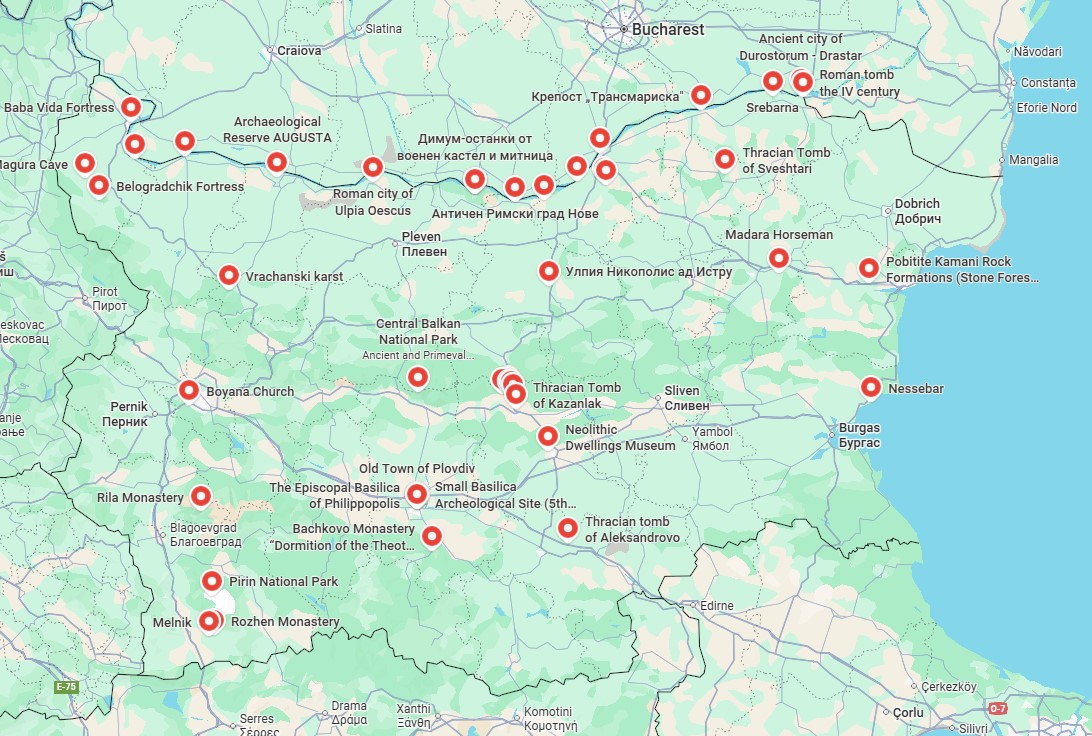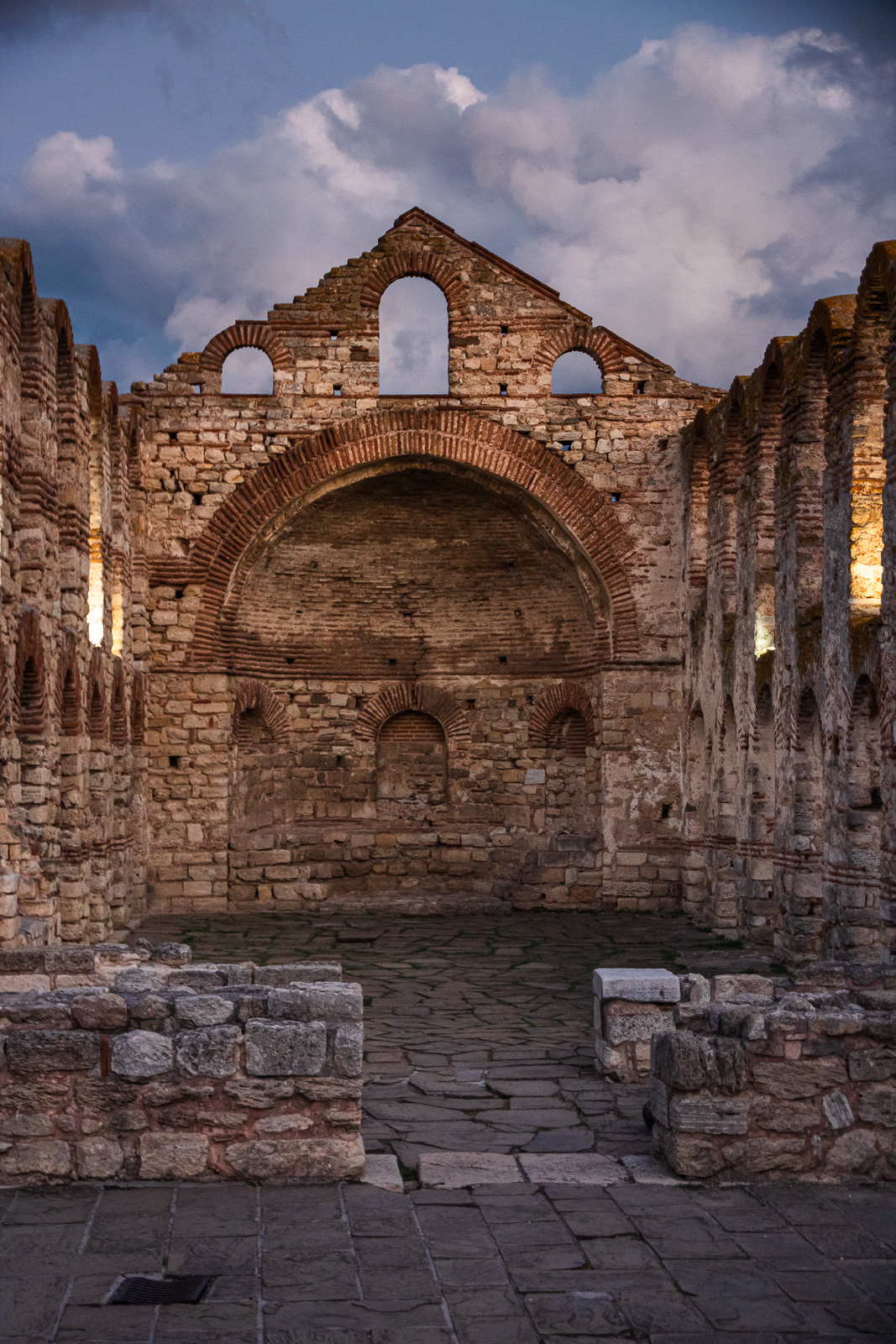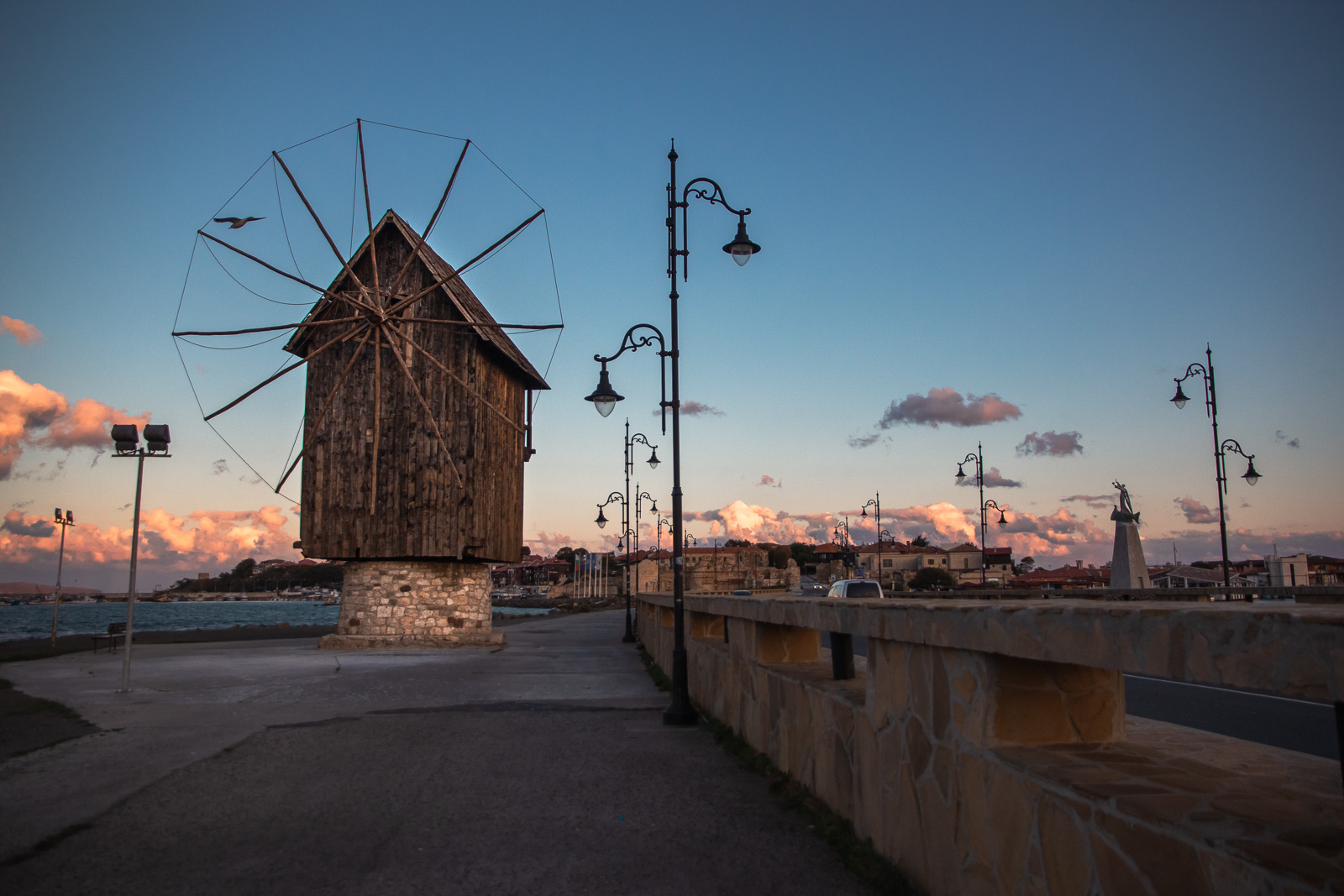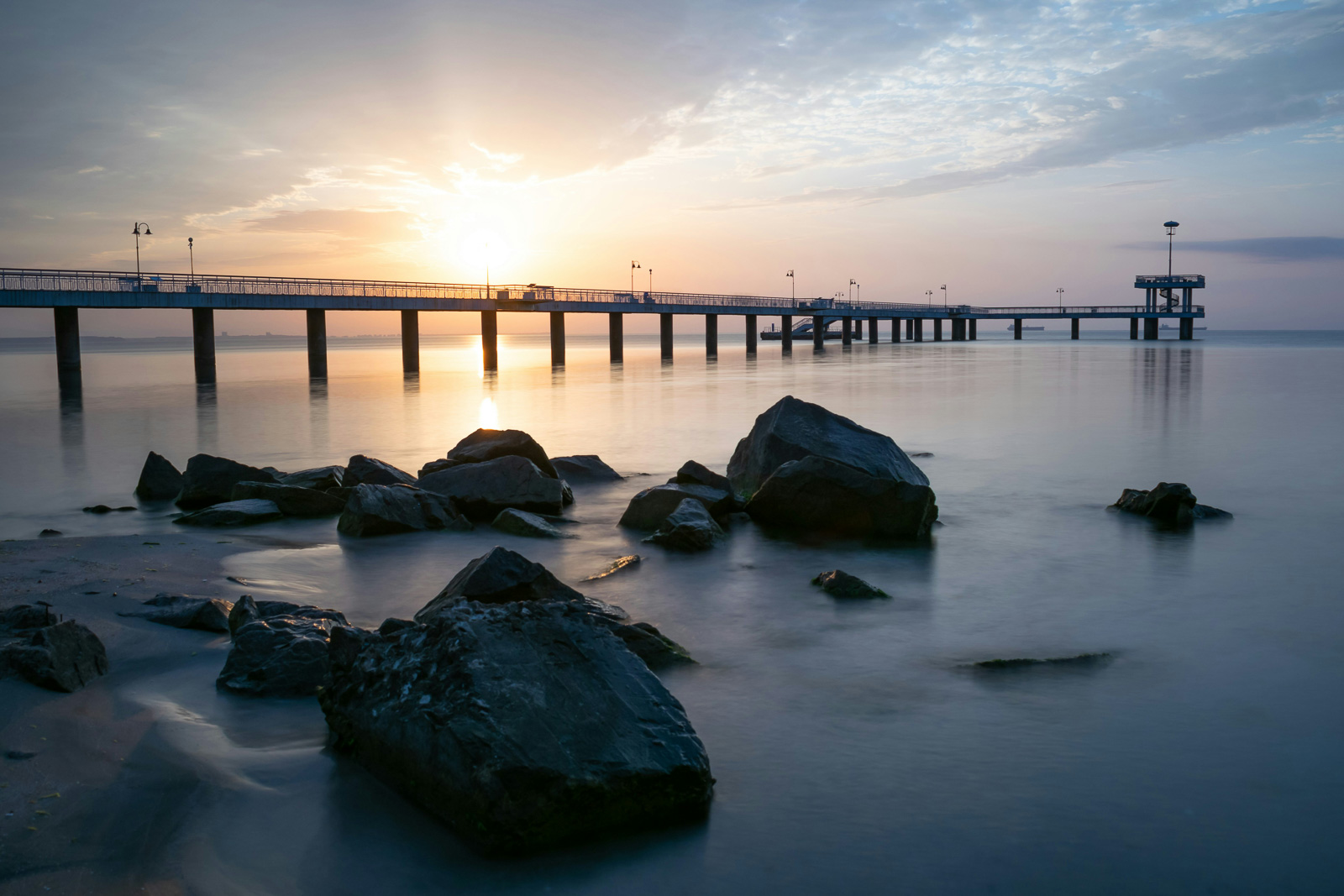10+ UNESCO sites in Bulgaria
If you’re into history, culture, or simply love ticking off epic landmarks, you’ve probably heard of the United Nations Educational, Scientific and Cultural Organization (UNESCO).
UNESCO was created to identify, protect, and preserve cultural and natural heritage sites around the world that are considered to have outstanding value for all of humanity.
When it comes to Bulgaria UNESCO, the country proudly hosts 10 incredible UNESCO cultural and natural sites.
In this guide, I’ll walk you through each of these UNESCO sites Bulgaria has to offer. And because I like to go the extra mile, I’ll also share Bulgaria’s UNESCO tentative list and how the country contributes to UNESCO’s Intangible Cultural Heritage.
*This post may contain affiliate links. That means if you click through and book or buy something, I might earn a small commission at no extra cost to you.
1. Boyana Church
If you’re visiting Sofia, Boyana Church is an easy (and very worthwhile) stop. Tucked away at the foot of Vitosha Mountain, this small medieval church is made up of three connected buildings. The oldest part dates back to the 10th century.
What makes Boyana Church truly special isn’t its size but its detail. The frescoes are incredibly well-preserved and offer a rare look at medieval art that predates the Italian Renaissance by more than a century.
Boyana Church was declared a national heritage site in 1927 and remained an active parish church until 1954. In 1979, it became one of the first monuments to be included on the UNESCO Bulgaria World Heritage List. Today, the church attracts over 200,000 tourists annually, and visitors can explore the ground floor.
Location: Boyana district, Sofia
Category: Culture
Date of Inscription: 1979
Dossier: 42
Local tip: Many travelers on UNESCO tours Bulgaria combine a visit to Boyana Church with a trip to the Rila Monastery (another UNESCO site). It’s a great day trip from Sofia if you want to check off two major cultural landmarks at once. Book your visit here.
2. Madara Rider
The Madara Rider (sometimes also called the Madara Horseman) is a relief carved into a 100-meter-high cliff in the 8th century AD near the village of Madara, Bulgaria, about 20 km from the city of Shumen.
The relief shows a life-sized horseman, a dog, and a lion, accompanied by inscriptions in Greek. The rider holds the reins with his left hand and strikes a fallen lion with a short spear in his right.
Historians believe the figure may represent Khan Tervel, depicted as a victorious ruler. The inscriptions record events from the 8th-9th centuries during the reigns of Khans Tervel, Omurtag, and Kormisos, offering a direct link to Bulgaria’s early medieval past.
The Madara Rider is one of the most unique UNESCO World Heritage sites Bulgaria has to offer. It’s also a part of the National Historical and Archaeological Reserve “Madara.”
Location: Madara, Shumen
Category: Culture
Date of Inscription: 1979
Dossier: 43
Local tip: Wear comfortable shoes and combine your visit with a trip to Pliska, the first capital of the Bulgarian State. The ruins of the Great Basilica of Pliska (built in 870 AD) were once among the largest Christian temples in Europe and are only a short drive from Madara. Book a private historical tour here.
3. Thracian Tomb of Kazanlak
The Thracian Tomb of Kazanlak dates back to the late 4th century BC, but was discovered in 1944. It’s part of a large necropolis located near the site of Seutopolis, the capital of Thracian king Seutes III.
The tomb has a narrow corridor leading to a circular burial chamber, both covered in remarkably well-preserved murals – some of the finest examples of Hellenistic art in Bulgaria.
The paintings depict warriors, horsemen in traditional Thracian attire, and, most famously, a “funeral banquet” scene. In it, the ruler and his wife clasp hands, symbolizing eternal unity, while the golden wreath on his head reveals his royal status.
Location: Kazanlak, Stara Zagora
Category: Culture
Date of Inscription: 1979
Dossier: 44
Local tip: The original tomb is closed to the public to protect its fragile artwork, but there’s an exact replica next door that lets you experience every detail without harming the site. If you’re exploring Bulgaria UNESCO world heritage sites, make sure to also visit the other tombs in the Valley of the Thracian Kings (see the tentative list section below). And if you’re around in May or June, don’t miss the Rose Festival in Kazanlak – it’s a perfect cultural bonus to your trip.
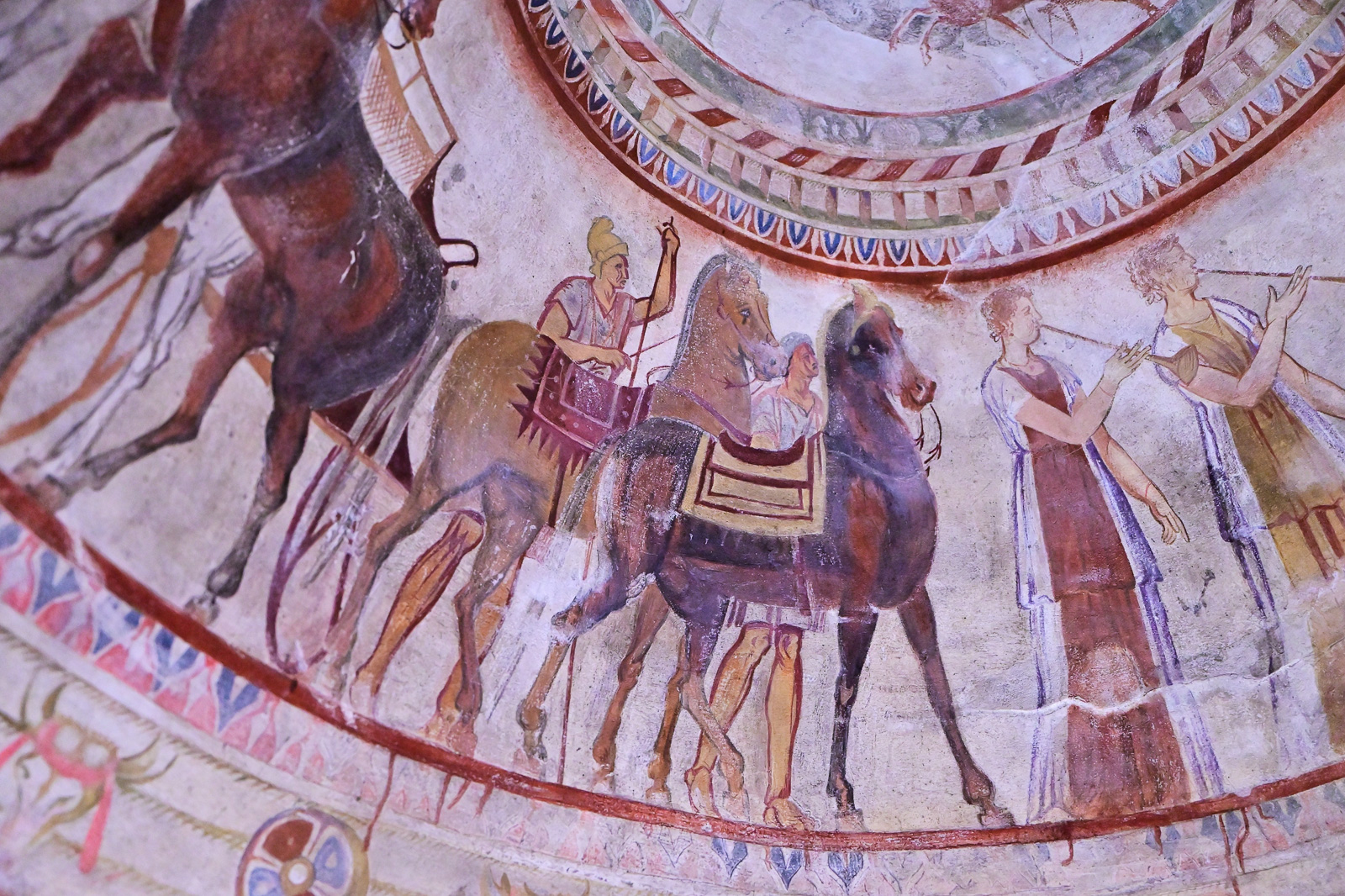
Image Source: Unsplash.com
4. Rock-Hewn Churches of Ivanovo
The Rock-Hewn Churches of Ivanovo are located in the scenic valley of Rusenski Lom River and form a unique complex of churches, chapels, monasteries, and monks’ cells carved directly into the cliffs.
The first hermits settled here in the 12th century, and in the early 13th century, monk Joachim – who later became the Bulgarian Patriarch – founded the monastery.
The monastery complex includes several clusters of rock-hewn chambers. In six of its churches, 13th-14th-century frescoes have been preserved. The murals in the Church of the Holy Virgin are especially renowned and are considered some of the finest examples of Palaiologan art in the Balkans. Their exceptional quality earned the site its place on the UNESCO World Heritage List Bulgaria.
Location: Ivanovo, Ruse
Category: Culture
Date of Inscription: 1979
Dossier: 45
Local tip: You can easily visit Ivanovo if you are planning a stay in Ruse. While you are in the area, make sure to visit the Cherven Fortress.
Book a self-guided tour to Ivanovo Churches here.
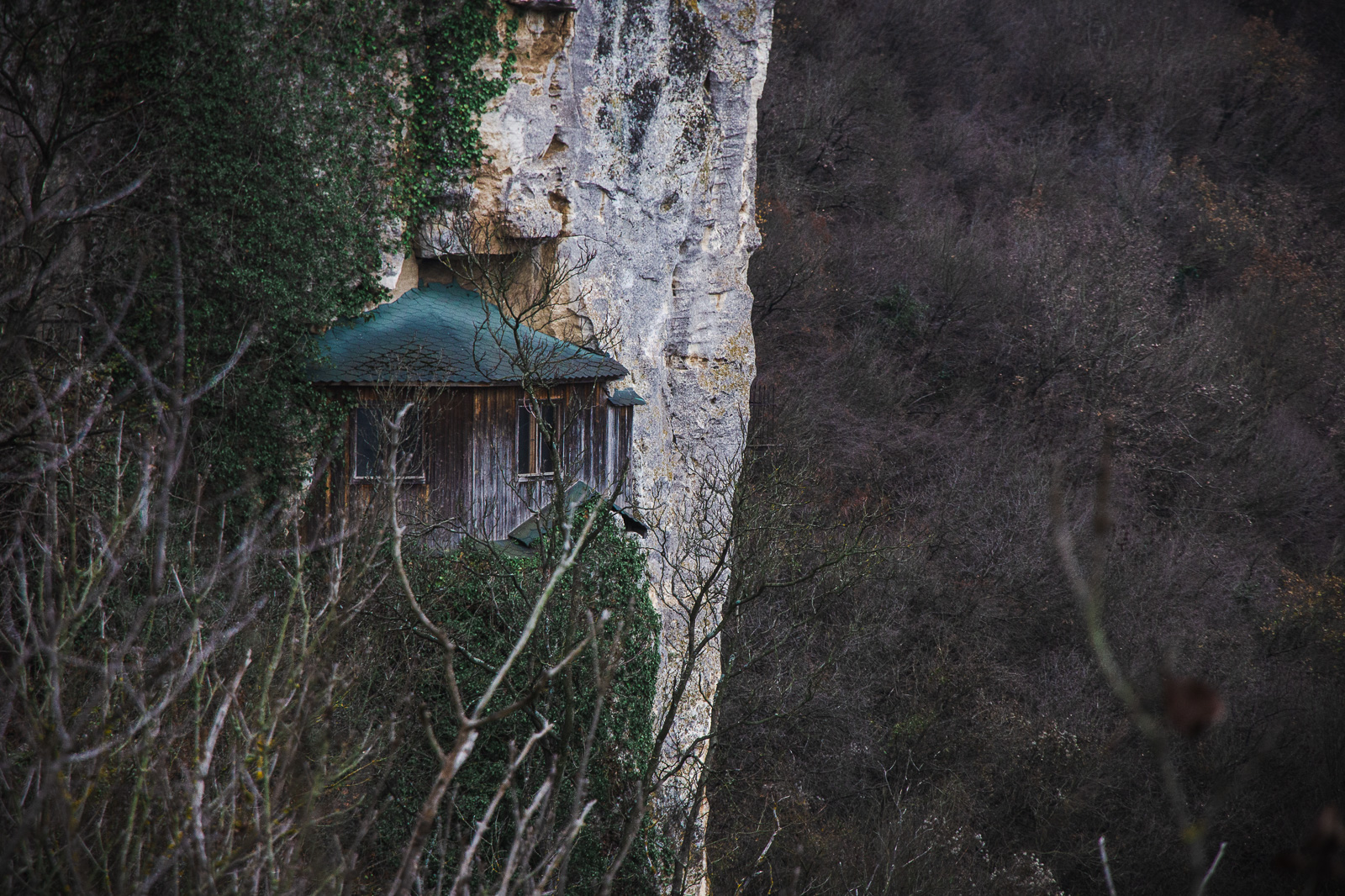
5. Rila Monastery
The Rila Monastery was founded in the 10th century by St. John of Rila, the patron saint of Bulgaria. Over time, it grew into a major religious and cultural institution, playing a vital role in preserving Bulgarian identity during the centuries of Ottoman rule.
During this period, the monastery became a hub of education, literature, and spiritual life. After the destruction of the Tarnovo Literary School, it relocated to Rila Monastery. In the 18th and 19th centuries, the monastery also opened schools, including one led by Neofit Rilski – a prominent scholar and abbot who trained teachers and clergy from all over Bulgaria.
Today, the monastery stands not only as one of the UNESCO World Heritage Sites in Bulgaria but also as a powerful symbol of Slavic cultural identity and Bulgaria’s enduring spirit.
Location: Rila mountains, Kyustendil
Category: Culture
Date of Inscription: 1983
Dossier: 216
Local tip: Plan to spend at least half a day here. Explore the monastery’s museum, admire the intricate frescoes, and take a short walk to St. John of Rila’s cave for a quieter, more spiritual experience. Many travelers also combine this visit with a stop at Boyana Church in Sofia – one of the most popular UNESCO tours in Bulgaria. Book a full-day guided tour from Sofia here.
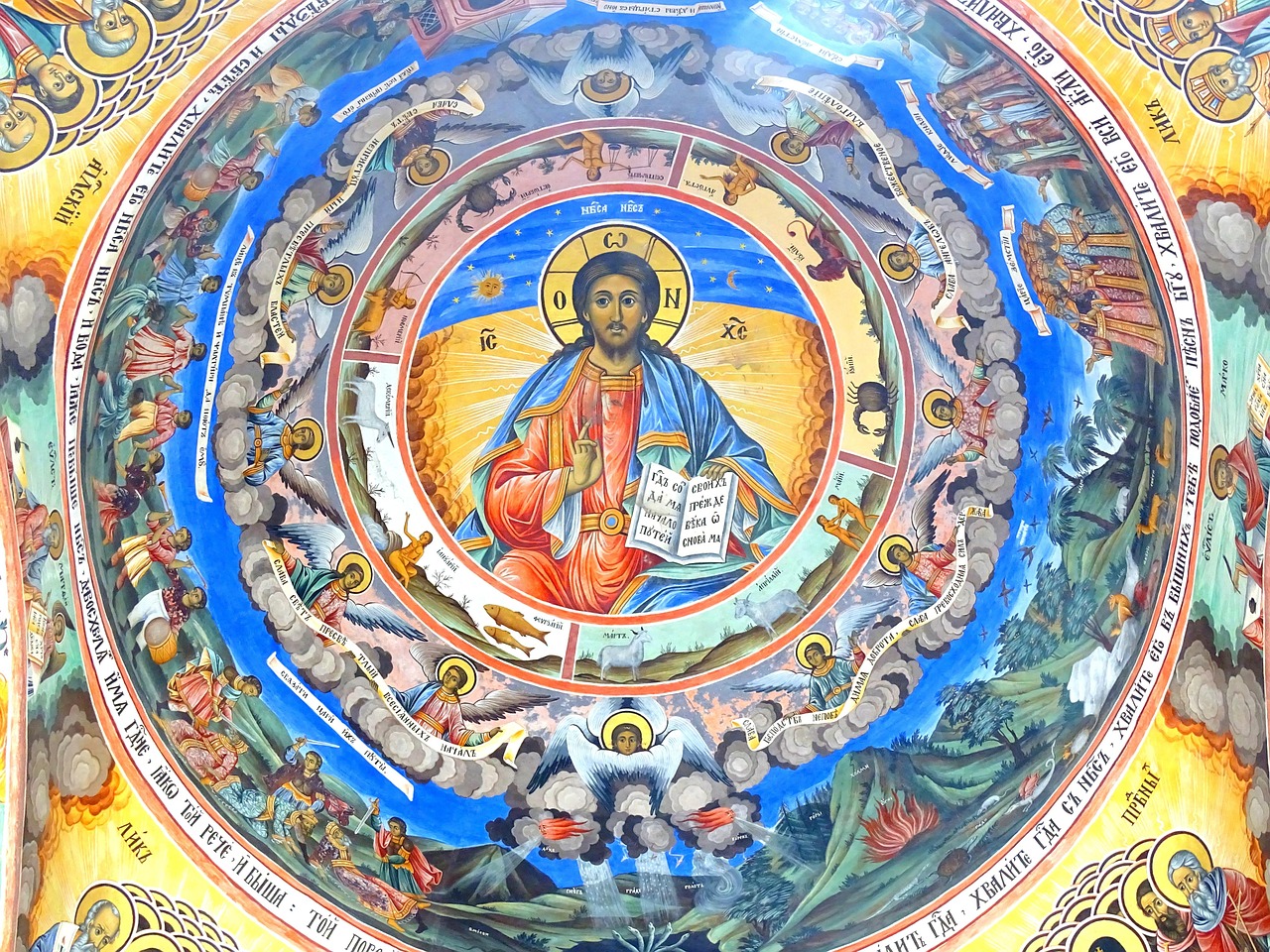
Image Source: Pixabay.com
6. Ancient City of Nessebar
The Ancient City of Nessebar is one of the oldest continuously inhabited towns in Europe, with a history stretching back over 3,200 years. The old town is located on a small rocky peninsula connected to the mainland by a narrow isthmus.
It all started with the Thracians, who named it Melsambria (“the city of Melsas,” after their legendary founder). Then came the Greeks in the 6th century BC, and Nessebar quickly grew into a bustling polis with fortified walls, temples, a theater, and busy workshops.
Fast-forward to the Middle Ages, and Nessebar became one of the most important Byzantine towns on the coast. You can still see traces of this era in the medieval churches scattered around town. Later, during Bulgaria’s National Revival, the wooden Black Sea-style houses appeared – and they’ve been charming visitors ever since.
UNESCO recognized the old town in 1983, making it one of the standout UNESCO World Heritage Bulgaria sites. Nessebar is basically an open-air museum, but it’s also very much alive, with locals selling fresh seafood, little cafés tucked between ancient walls, and sea views that are hard to beat.
Location: Nessebar, Burgas
Category: Culture
Date of Inscription: 1983
Dossier: 217bis
Local tip: If you can, spend the night in the old town to capture stunning photos at sunset. To make the most of your visit, consider joining a guided sightseeing tour or enjoy a relaxing boat trip.
Book a panoramic guided tour to discover Nessebar’s highlights here
Book a relaxing 4-hour boat tour around Nessebar here
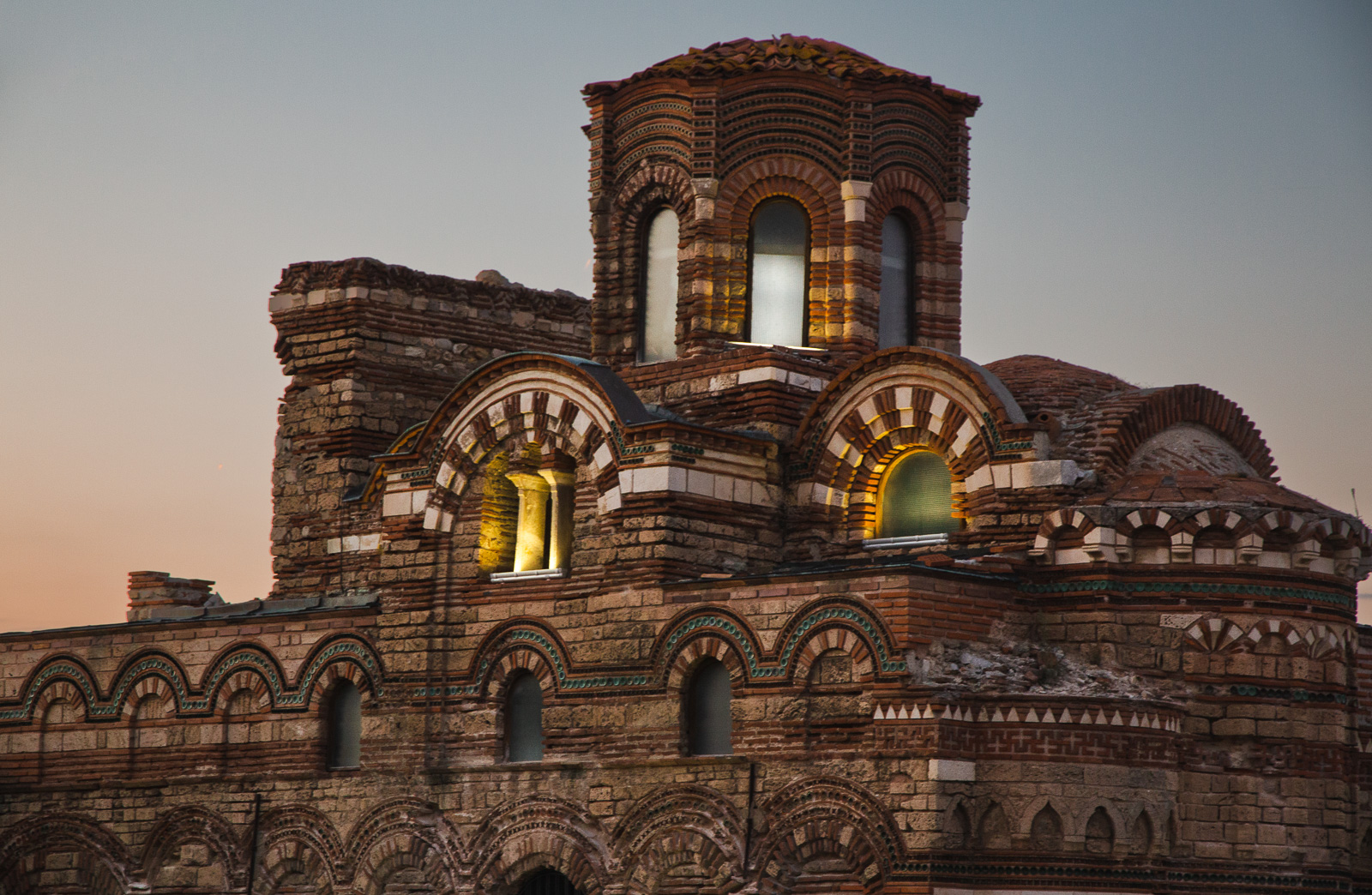
7. Srebarna Nature Reserve
If you’re into wildlife, Srebarna Nature Reserve is one of the most fascinating UNESCO Bulgaria sites. This freshwater lake, covering over 600 hectares right next to the Danube, is a safe haven for more than 220 bird species. Nearly 100 of them nest here, while around 80 others use it as a rest stop on the Via Pontica, one of the main bird migration routes between Europe and Africa.
Over the years, Srebarna has drawn explorers and scientists alike. Travelers like Edward Hodek and Felix Kanitz called it “the Eldorado for water birds,” and they weren’t wrong.
Today, you can spot:
- The famous Dalmatian pelican
- Glossy ibis
- Purple heron
- Spoonbill
- Otters
- And even rare winter visitors like the red-breasted goose.
Location: Srebarna, Silistra
Category: Nature
Date of Inscription: 1983
Dossier: 219bis
Local tip: Stop by the on-site nature museum – there’s a live camera feed streaming straight from the pelican colony. And if you’re really into birdwatching, combine your trip with Cape Kaliakra. It’s one of Bulgaria’s most important birding sites, home to remnants of the Dobruja steppe and the largest coastal cliffs along the Black Sea.
Book a two-day birdwatching adventure to explore Cape Kaliakra and Srebarna Lake
8. Pirin National Park
Pirin National Park is one of Bulgaria’s wildest and most breathtaking natural treasures. Covering more than 40,000 hectares in the Pirin Mountains in southwest Bulgaria, the park stretches from 1,008 to 2,914 meters in altitude and offers everything from alpine meadows and glacial lakes to dense coniferous forests, waterfalls, and dramatic rocky peaks.
The park is home to three nature reserves:
- Bayuvi Dupki – Dzhindzhiritsa
- Yulen
- Tisata
They are all included in UNESCO’s “Man and Biosphere” program. Most of the protected territory is high-mountain terrain, untouched by development, with the exception of a few skiing areas around Bansko and Dobrinishte.
Pirin has incredible biodiversity – perfect for hikers and nature lovers, but also for winter sports enthusiasts. Here you’ll find the famous Baikushev’s pine, a rare species native to the Balkans and one of the oldest trees in the region, more than 1,300 plant species and diverse wildlife.
Location: Pirin National Park, Pirin Mountains
Category: Nature
Date of Inscription: 1983
Dossier: 225bis
Local tip: If you’re visiting in summer, hike to Pirin’s highest peak – Vihren (2,914 m), for panoramic views of the park. In winter, you can combine your trip with skiing in Bansko or Bezbog.
Book a hiking adventure in summer with a visit to Bansko here
Book a snowshoeing trip in winter with SPA relaxation here
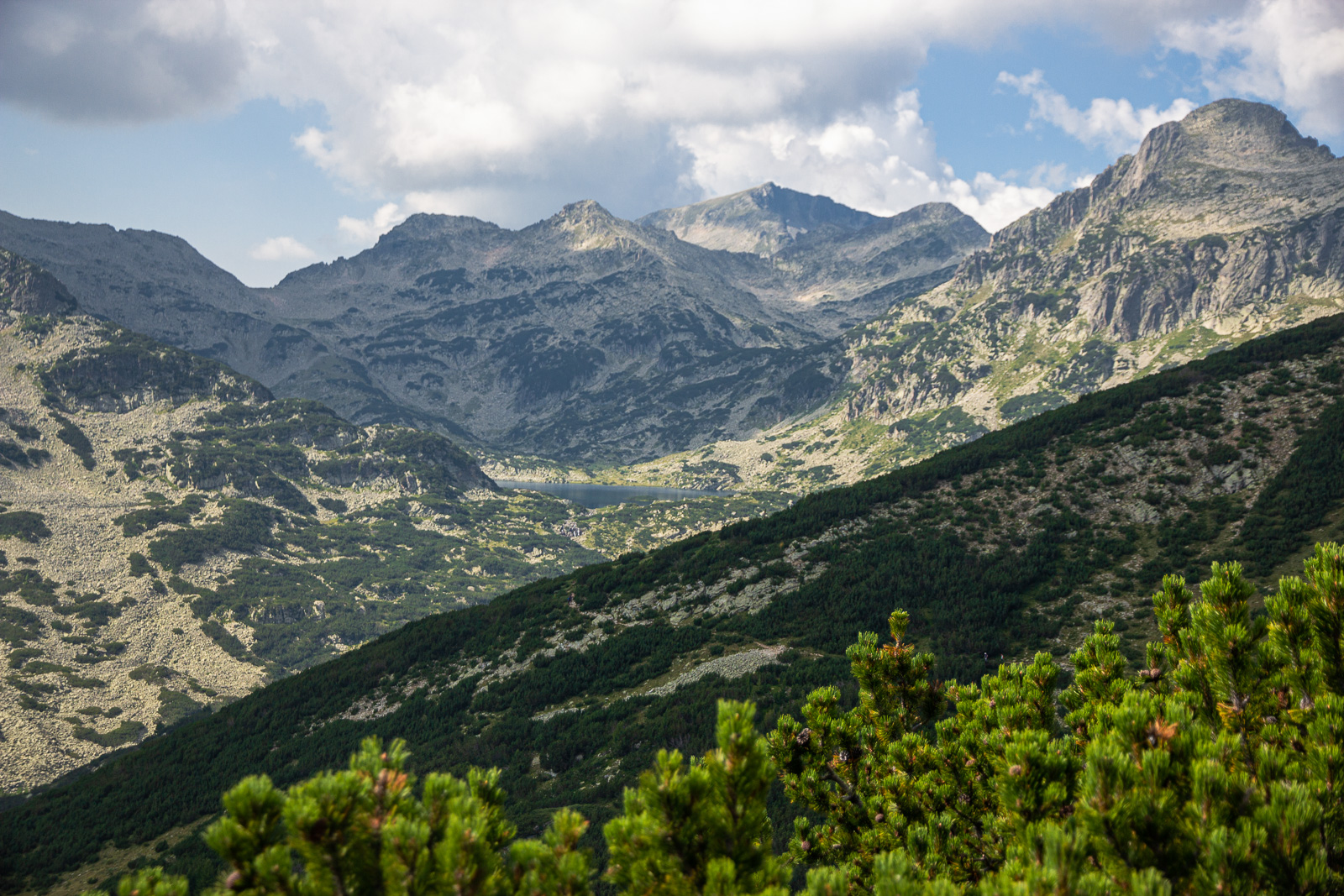
9. Thracian Tomb of Sveshtari
The Thracian Tomb of Sveshtari is a 3rd-century BC tomb that is hidden beneath a mound on the Ludogorie Plateau near the village of Sveshtari. It is one of the most remarkable Thracian sites in Bulgaria.
Discovered in 1982, it’s believed to be the final resting place of King Dromichaetes, ruler of the Getae – a Thracian tribe praised by Herodotus as one of the most just peoples of the ancient world.
What makes the tomb stand out is its unique architectural style and decoration. Step inside and you’ll find a central chamber unlike anything else in Thracian archaeology – ten elegant caryatids (female figures in high relief) support the ceiling blocks, combining human features with floral elements. Above them, the vaulted lunette is painted with scenes that, to this day, remain one-of-a-kind in the Thracian world.
Although the tomb’s decor is unique, the structure showcases the fundamental principles of Thracian cult buildings.
Location: Sveshtari, Razgrad
Category: Culture
Date of Inscription: 1985
Dossier: 359
Local tip: The tomb is part of the Sboryanovo Archaeological Reserve, which also includes sanctuaries, necropolises, and a Thracian fortified settlement. While you’re there, don’t miss Demir Baba Teke, a nearby Alevi shrine and a fascinating intersection of Thracian and Ottoman-era heritage.
Book a self-guided tour to Sveshtari here
10. Ancient and Primeval Beech Forests of the Carpathians and Other Regions of Europe
This is one of the most unusual UNESCO listings on Bulgaria’s list – it’s part of a transnational site shared by 18 countries across Europe, highlighting some of the best-preserved and most representative old-growth beech forests on the continent.
Bulgaria’s contribution comes from nine strictly protected reserves within Central Balkan National Park:
- Boatin
- Tsarichina
- Kozya Stena
- Steneto
- Sokolna
- Peeshti Skali
- Stara Reka
- Dzhendema
- Severen Dzhendem.
These forests cover almost 11,000 hectares, making up about 55% of the park’s reserve area and over 15% of the entire national park.
Since the end of the last Ice Age, European beech trees have gradually spread from isolated glacial refuges across the continent. The forests in Bulgaria’s Central Balkan region showcase this natural evolution, representing ecosystems that have remained largely untouched by human activity.
Location: Central Balkan National Park, Balkan Mountains
Category: Nature
Date of Inscription: 2007
Dossier: 1133quinquies
Local tip: You can explore parts of these forests via marked trails in Central Balkan National Park. Read and follow my Botev Peak and Raysko praskalo itinerary to see the beech forests in Dzhendema reserve or book a guided tour with a route that goes through one of the reserves.
Book your “To Heaven and Back” hiking tour here
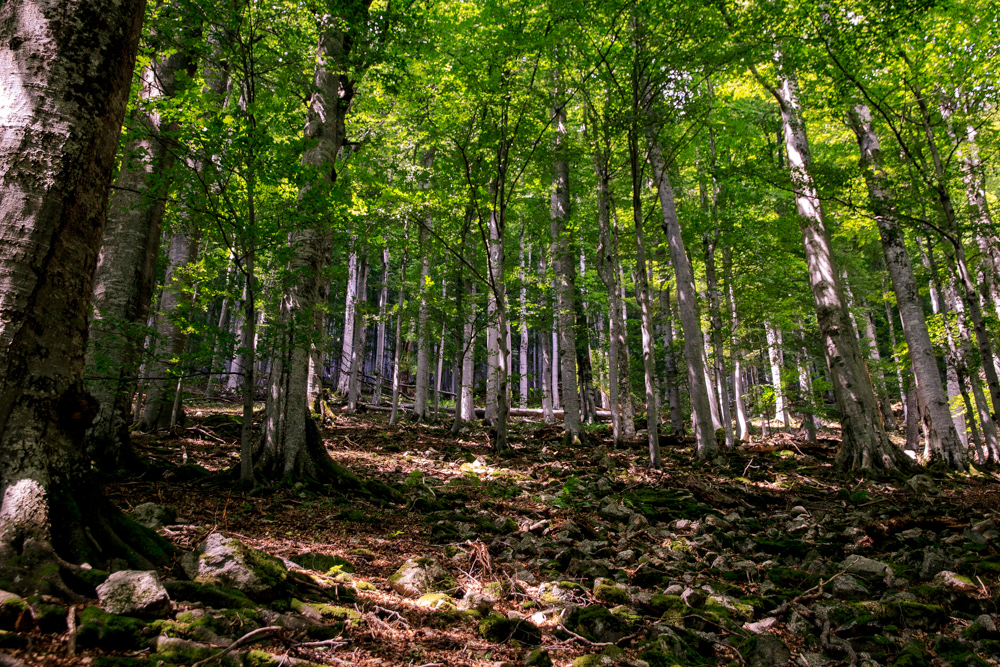
Sites on the tentative list
A Tentative List is an inventory of those properties which each State Party intends to consider for nomination.
States Parties are encouraged to submit their Tentative Lists, properties which they consider to be cultural and/or natural heritage of outstanding universal value and therefore suitable for inscription on the World Heritage List.
Neolithic dwellings
In Stara Zagora, you will find two neolithic dwellings with their interior and household furnishings and utensils completely preserved.
These two exceptionally well-preserved homes from the 6th millennium BC are among the oldest surviving examples of domestic life in Europe and the Near East. Discovered with their full interior, tools, and household items intact, they offer a rare glimpse into daily Neolithic life.
Location: Neolithic Dwellings Museum, Stara Zagora
Category: Culture
Date of Submission: 1984
Ref.: 44
The Magoura cave
Magoura Cave features one of the most significant collections of prehistoric cave art in Europe, with Bronze Age and early Iron Age ritual drawings preserved on its walls.
Located near the village of Rabisha, the cave also contains evidence of ancient settlements dating back over 3,000 years. It’s a protected cultural and natural site, open to visitors year-round.
Location: Rabisha, Vidin
Category: Culture
Date of Submission: 1984
Ref.: 45
Nicopolis ad Istrum
Nicopolis ad Istrum was founded by Emperor Trajan in the 2nd century AD. It was a major Roman city with a well-planned layout, impressive architecture, and its own coin mint. The site includes streets, public buildings, and a forum that rivals cities like Ephesus and Palmyra. Today, it’s a key archaeological monument and open to visitors year-round.
Location: Nikyup, Veliko Tarnovo
Category: Culture
Date of Submission: 1984
Ref.: 47
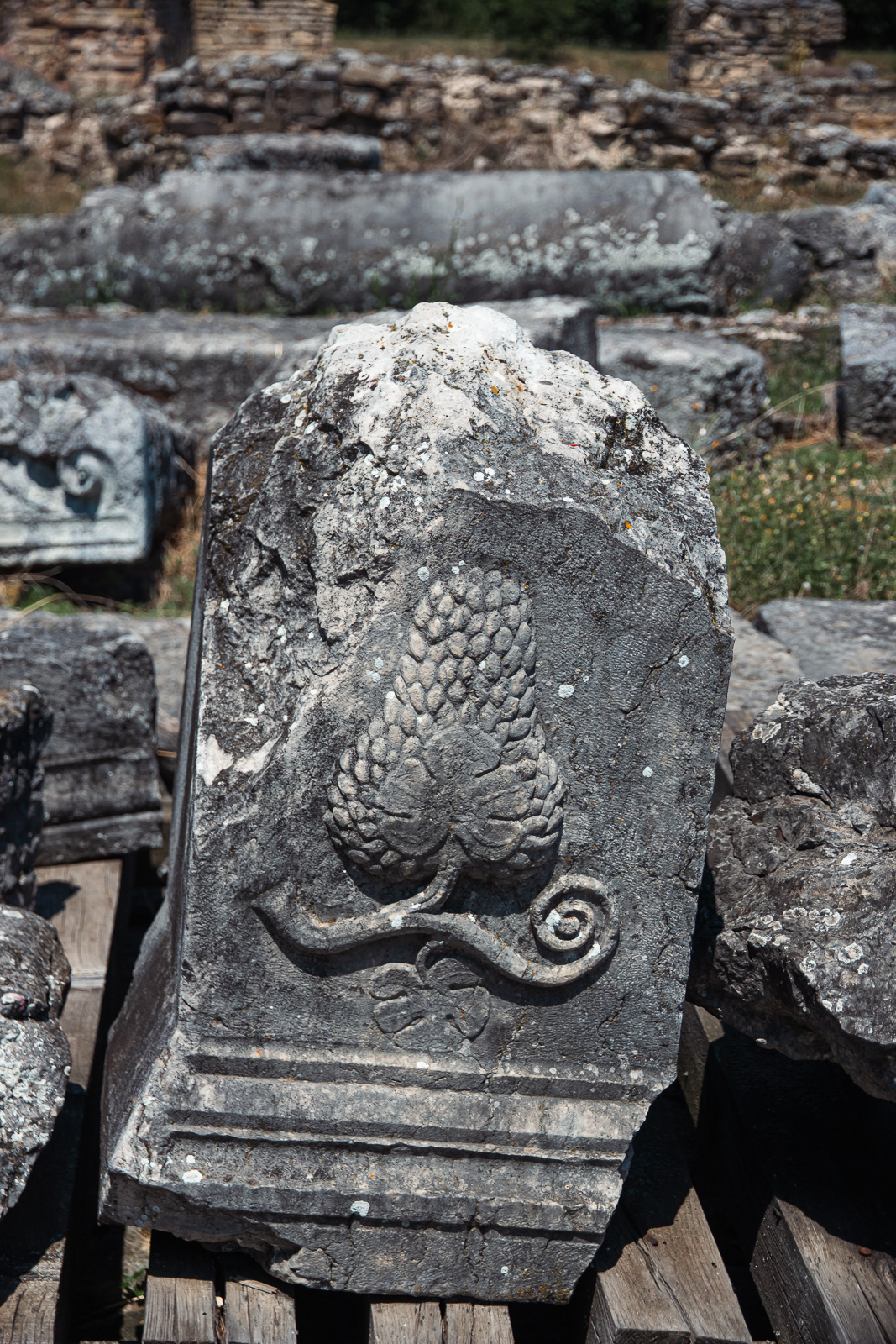
Аncient tomb of Silistra
The Ancient tomb of Silistra is a 4th-century tomb and one of the best-preserved examples of late antique painting in the Balkans.
Its interior features richly detailed murals depicting a noble couple, servants, animals, and mythological motifs, all in the provincial Roman style. Located in Silistra, the tomb offers rare insight into funerary art and life in Roman Thrace.
Location: City of Silistra
Category: Culture
Date of Submission: 1984
Ref.: 48
Bachkovo Monastery
Bachkovo Monastery is one of the oldest and most culturally significant monasteries in the Balkans.
It was founded in the 11th century and reflects a blend of Byzantine, Georgian, and Bulgarian traditions and houses unique medieval chapels, frescoes, and an ossuary unlike anything else in the Eastern Orthodox world. Its rich history and setting in the Rhodope Mountains make it a must-visit.
Location: Bachkovo, Plovdiv
Category: Culture
Date of Submission: 1984
Ref.: 49
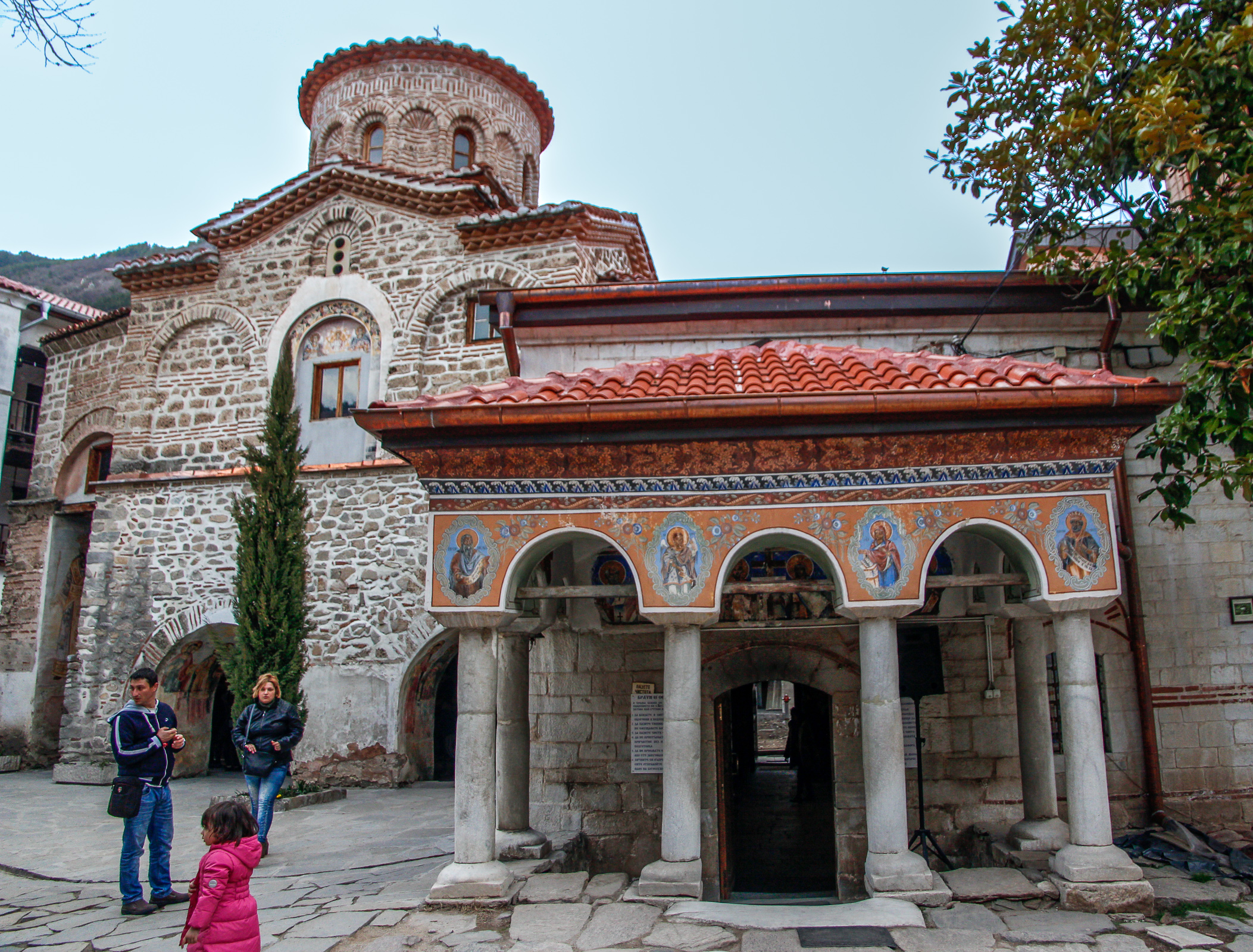
Melnik and Rozhen Monastery
Melnik is Bulgaria’s smallest town but packed with history, traditional architecture, and medieval ruins and also located among dramatic sandstone pyramids.
Just 5 km away, the Rozhen Monastery is a well-preserved gem with centuries-old murals, wood-carved altars, and over 100 valuable icons. Together, they form a stunning blend of nature, culture, and Orthodox heritage.
Location: Melnik, Blagoevgrad; Rozhen, Blagoevgrad
Category: Culture
Date of Submission: 1984
Ref.: 50
Rusenski Lom National Park
Rusenski Lom National Park is located along the Rusenski Lom River and combines dramatic cliffs, lush forests, and biodiversity with historic rock monasteries. It’s home to rare and endangered bird species like the saker falcon and Egyptian vulture, making it a hotspot for both nature lovers and cultural explorers.
Location: Rusenski Lom River, Ruse
Category: Nature
Date of Submission: 1984
Ref.: 54
Ancient Plovdiv (Old Town)
Plovdiv is one of Europe’s oldest cities and has been continuously inhabited since the 3rd millennium BC and preserves layers from Thracian, Roman, Byzantine, and Ottoman times. Its Old Town, spread across the Three Hills, is home to landmarks like the Roman Theatre, medieval walls, and beautifully preserved 18th-19th century Revival houses.
Location: City of Plovdiv
Category: Culture
Date of Submission: 2004
Ref.: 1948
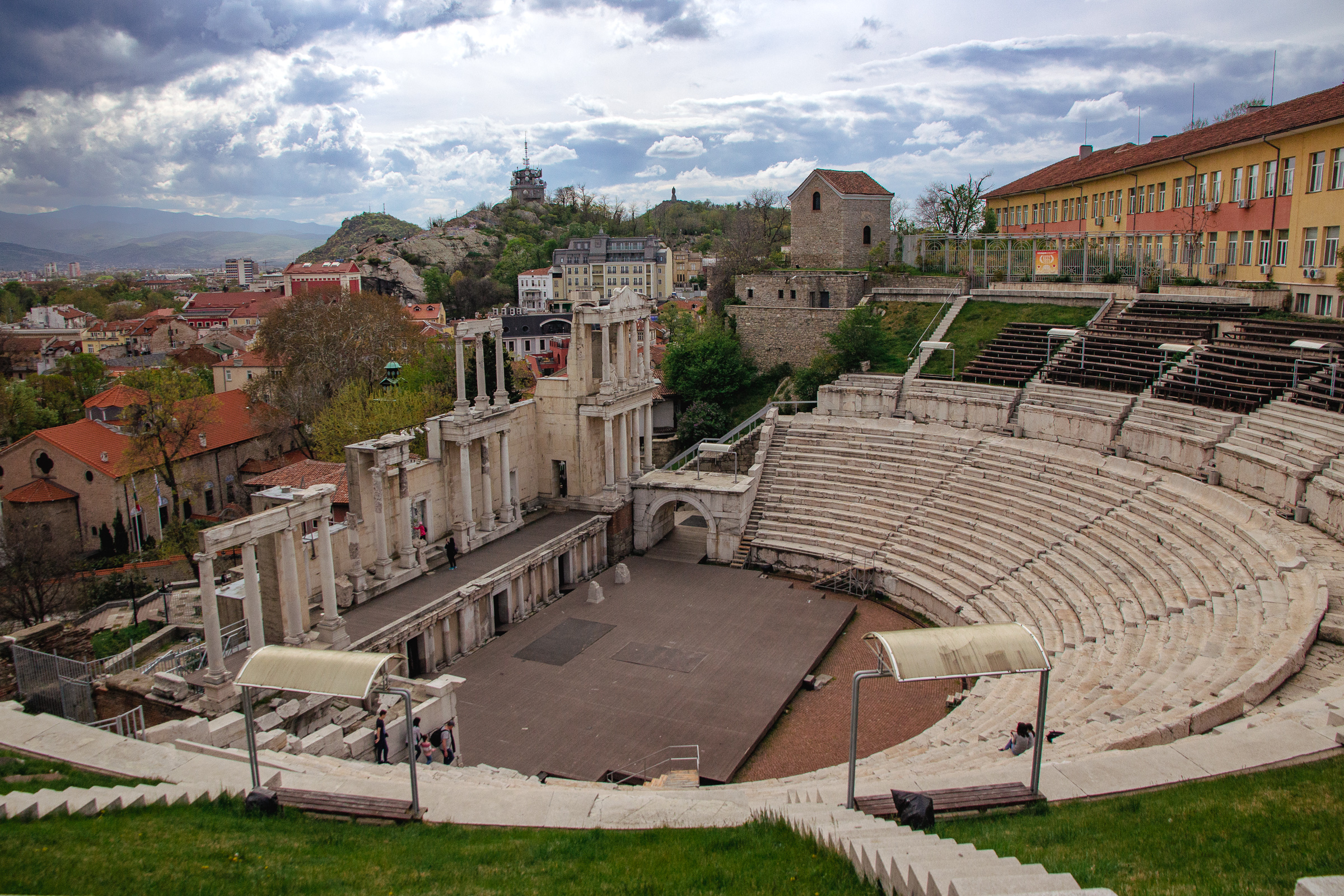
Thracian Tomb of Alexandrovo
This 4th-century BC domed Thracian Tomb with wall paintings beside Alexandrovo village was discovered in 2000. It is notable for its impressive architecture and remarkably preserved frescoes. The detailed hunting scenes inside offer rare insight into Thracian life, clothing, and rituals. It’s one of the most important examples of ancient wall painting in Bulgaria.
Location: Alexandrovo, Haskovo
Category: Culture
Date of Submission: 2004
Ref.: 1949
Vratsa Karst Nature Reserve
The Vratsa Karst nature reserve is located in the western Balkan Mountains and features dramatic karst landscapes, over 40 caves, and Bulgaria’s tallest seasonal waterfall – Skaklia (140 m). The highlight is Vratsata Gorge, with 450-meter cliffs, the highest vertical walls at this altitude in Europe. It’s a hotspot for geology lovers, climbers, and hikers alike.
Location: Vrachanski karst, Vratsa, Balkan Mountains
Category: Nature
Date of Submission: 2011
Ref.: 5639
Belogradchik Rocks
Belogradchik Rocks are striking rock formations near the town of Belogradchik that feature natural sculptures shaped like people, animals, and fortresses – some reaching up to 30 meters high. Their reddish hues contrast beautifully with the surrounding forests and meadows, making them one of Bulgaria’s most iconic natural landmarks.
Location: Belogradchik, Vidin
Category: Nature
Date of Submission: 10/10/2011
Ref.: 5640
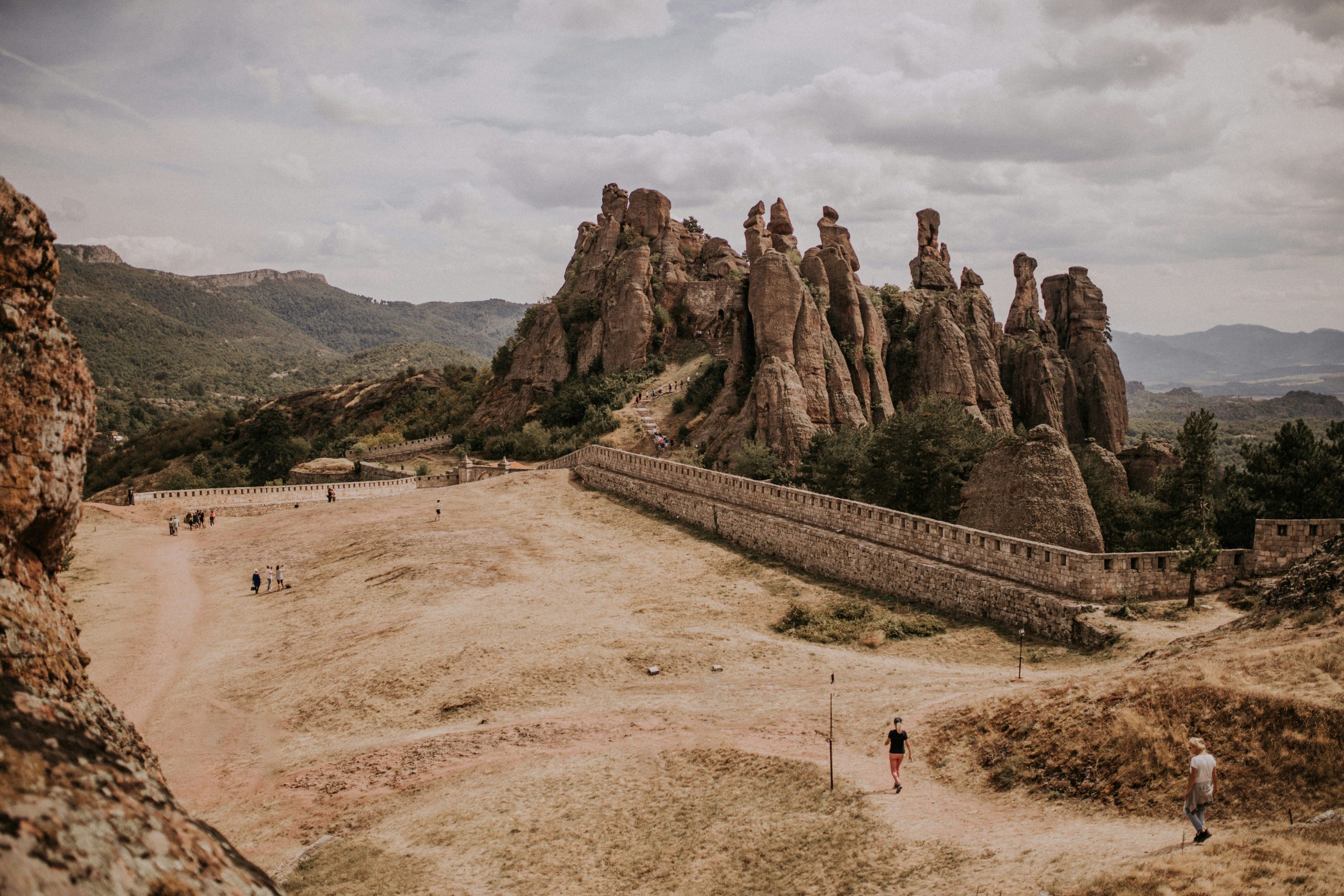
Image Source: Unsplash.com
Central Balkan National Park
Central Balkan National Park is a protected area that stretches across the highest parts of the Balkan Mountains and preserves old beech forests, alpine meadows, and the mountain’s highest peak – Botev (2,376 m). It safeguards unique mountain wildlife and centuries-old traditions rooted in the heart of Bulgaria.
Location: Central Balkan National Park, Balkan Mountains
Category: Nature
Date of Submission: 2011
Ref.: 5641
Pobiti Kamani (Stone Forest)
Pobiti Kamani, also called the “Stone Forest” or “Dikilitash,” is a natural monument near Varna, where towering limestone columns rise dramatically from a dry, sandy land.
These pale-grey sandstone pillars were formed millions of years ago by geological processes and some of them reach up to 10 meters high and sometimes 6 meters across. Their fantastical shapes are carved by wind and water and remind us of ancient ruins.
The surrounding semi-desert supports rare plant and animal species, adding even more value to this surreal, almost otherworldly landscape.
Location: Near Slanchevo, Varna
Category: Nature
Date of Submission: 2011
Ref.: 5642
The royal necropolis of the Thracian city of Seuthopolis
The royal necropolis of the Thracian city of Seuthopolis, capital of King Seuthes III, is one of Europe’s richest clusters of Thracian tombs and is situated in the Kazanlak Valley.
Except for the famous Kazanlak Tomb, there are several constituent elements:
- Cult-mortuary complex in Ostrusha mound
- Tomb in Golyama Kosmatka mound
- Tomb in Shushmanetz mound
- Tomb in Golyama gola mogila mound (also called “The Griffins”)
- Tomb in Malka gola mogila mound (also called “Helvetia”)
- Tomb in Golyama Arsenalka mound
- Tomb in Sarafova mogila mound (Kran 2)
- Masonry grave in Svetitzata mound
Some tombs feature beehive-shaped domes or monolithic granite chambers, others intricate stone doors carved with solar symbols, all serving as final resting places for Thracian nobility. Archaeological work revealed over 300 mounds, with finds ranging from golden death masks to inscribed silver vessels bearing the name of Seuthes III.
Location: Kazanlak, Stara Zagora
Category: Culture
Date of Submission: 26/02/2016
Ref.: 6085
Bishop’s Basilica and Late-Antique Mosaics of Philippopolis
In the heart of Plovdiv (ancient Philippopolis) are three remarkable monuments from the 4th to 6th centuries, showing the city’s importance as a centre of early Christianity and its exceptional skill in creating mosaics.
The sites are located near each other:
- The Bishop’s Basilica: The largest early Christian church in Bulgaria and one of the largest in the Balkans (83 m long, 36 m wide). Its floors were once covered with over 2,000 m² of colourful mosaics, featuring intricate geometric patterns, symbolic motifs, and lively scenes with birds and plants.
- The Small Basilica: A more modest church that still dazzles with 5th-6th century mosaics. These include twisting ribbon-like designs, floral ornaments, and a rare baptistery with a cross-shaped pool and images of stags and doves symbolising eternal life.
- The Late-Antique Irene Building: A luxurious 4th-6th century home centred around a colonnaded courtyard. Its highlight is a mosaic of the goddess Irene (Peace), surrounded by elegant floral and geometric patterns, offering a glimpse into the artistry and lifestyle of Plovdiv’s elite.
Location: City of Plovdiv
Category: Culture
Date of Submission: 29/01/2018
Ref.: 6287
Frontiers of the Roman Empire – The Danube Limes
The Danube Limes formed one of the most impressive frontiers of the Roman Empire – stretching for nearly 1,800 km along the mighty Danube, this is the largest monument ever built by one of history’s greatest civilizations.
From Croatia through Serbia, Bulgaria, and Romania, this vast chain of forts, watchtowers, cities, and roads once guarded Rome’s northern border for over half a millennium.
In Bulgaria, many cities and settlements, fortresses and smaller forts were found:
- Vidin/Bononia
- Archar/Ratiaria
- Lom/Almus
- Dolni Tsibar / Cebrus
- Kozloduy/Regianum/Bigrane
- Harlets/Augustae
- Gorni Vadin
- Dolni Vadin/Valeriana
- Baykal/Palatiolum/Palastolon
- Gigen/Oescus
- Nikopol/Asamus
- Nikopol/Securisca
- Belene/Dimum
- Belene/Quintodimum
- Svishtov/Novae
- Krivina/Iatrus
- Batin/Scaidava
- Mechka/Trimammium
- Pirgovo/Mediolana
- Ruse/Sexaginta prista
- Marten/Tegra/Tigrа
- Ryahovo/Appiaria
- Nova Cherna/Kynton/Κυντων
- Tutrakan/Transmarisca
- Dolno Ryahovo/Nigriniana
- Malak Preslavets/Candidiana
- Vetren/Tegulicium
- Silistra/Durostorum
There are also watchtowers, production centers and roads found along the Danube river in Bulgaria. Some of the sites are not yet excavated and developed for tourist visits, while others are attractions and open for visitors.
Location: Along the Danube River, Vidin, Montana, Vratsa, Pleven, Veliko Tarnovo, Ruse and Silistra
Category: Culture
Date of Submission: 31/01/2020
Ref.: 6474
Bulgaria in UNESCO Intangible Cultural Heritage
The UNESCO Intangible cultural heritage is about living traditions, including the skills, rituals, music, dances, and festive customs that communities pass down through generations and cherish as part of their identity.
Bulgaria has several unique customs and practices recognized on the international stage, which I’ll share with you below.
Bistritsa Babi
The Bistritsa Babi (“Bistritsa Grannies”) keep alive Bulgaria’s ancient Shoplouk polyphony – sharp, echoing calls woven with deep drones – along with traditional horo dances and the spring lazarouvane ritual.
Their vibrant costumes, counter-clockwise steps, and haunting harmonies carry centuries of tradition, making them one of the last living links to this rare musical heritage.
Nestinarstvo in Bulgari
Each June in the Strandzha village of Bulgari, the feast of Saints Constantine and Helena ends with the mesmerizing Nestinarstvo fire dance.
After a day of blessings, music, and processions to a holy spring, the sacred drum calls the nestinari to step barefoot onto glowing embers. This is a centuries-old act of devotion and a plea for the village’s health and prosperity that was once common across the entire country.
Chiprovtsi carpet-making
In the mountain town of Chiprovtsi, almost every home holds a vertical loom where women hand-weave kilimi – beautiful, double-sided carpets known for their intricate patterns and vivid colors.
The craft is passed down through generations, often from mother to daughter, accompanied by prayers, songs, and stories. Using locally produced and dyed wool, these carpets are a living symbol of the town’s identity.
Surva (Surova) festival in Pernik
Every January, the city of Pernik transforms into a stage for Surva, Bulgaria’s largest and most prestigious masquerade festival – and one of Europe’s finest.
Rooted in an ancient ritual to welcome the New Year and drive away evil spirits, the celebration fills the streets with survakari, kukeri, babugeri, and other masked performers from across Bulgaria and the world.
Thousands of participants parade in dazzling costumes, their bells and drums echoing through the winter air. Visitors come for the spectacle, the laughter, and the shared wishes for health and good fortune.
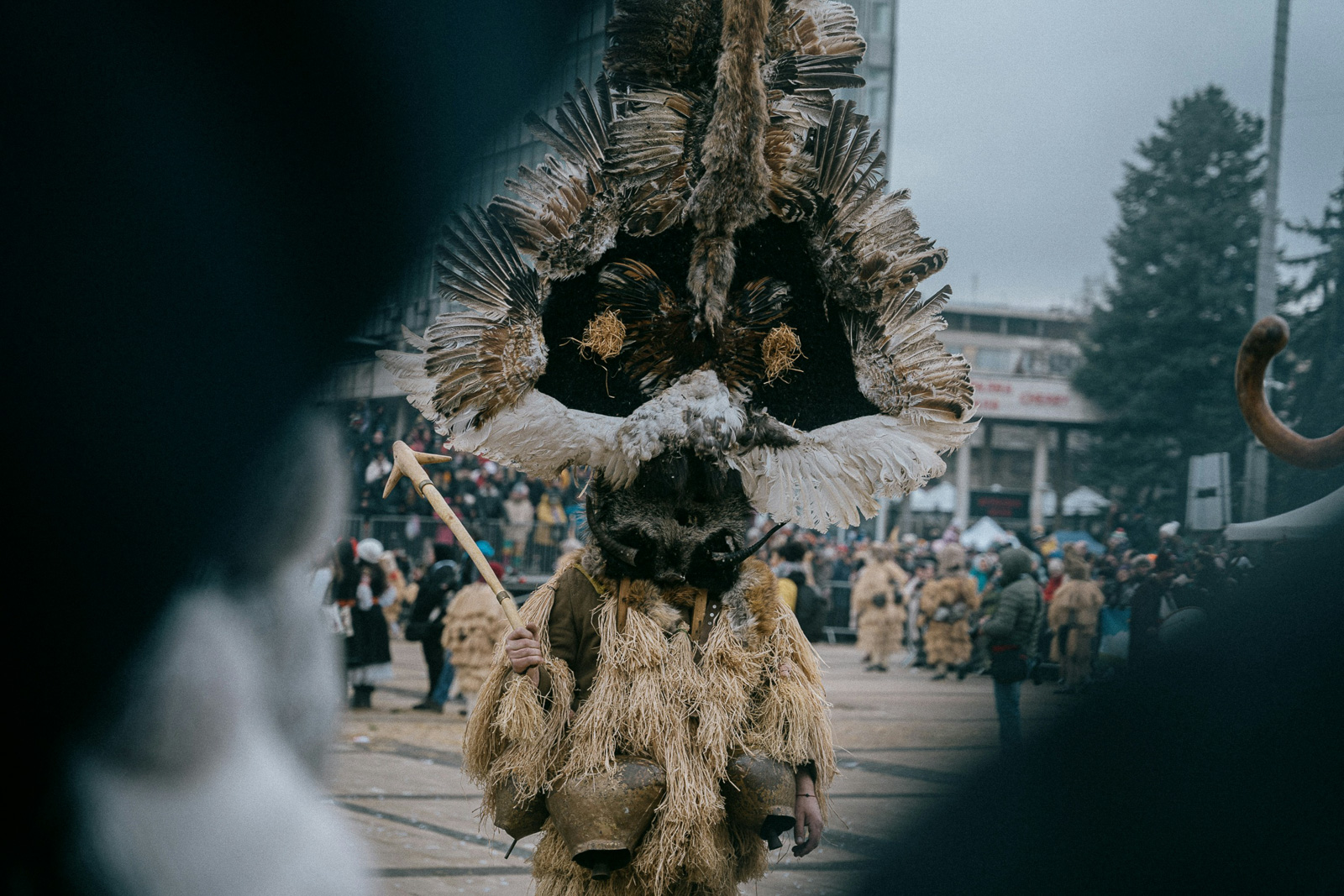
Image Source: Unsplash.com
Festival of folklore in Koprivshtitsa
Every five years in the mountain town of Koprivshtitsa, thousands of singers, dancers, storytellers, and artisans gather to celebrate Bulgaria’s living traditions. Since 1965, this open-air festival has brought together performers of all ages from across the country and beyond.
Nominated through regional contests, participants showcase everything from centuries-old songs to newly revived customs, while scholars and media document each performance for future generations.
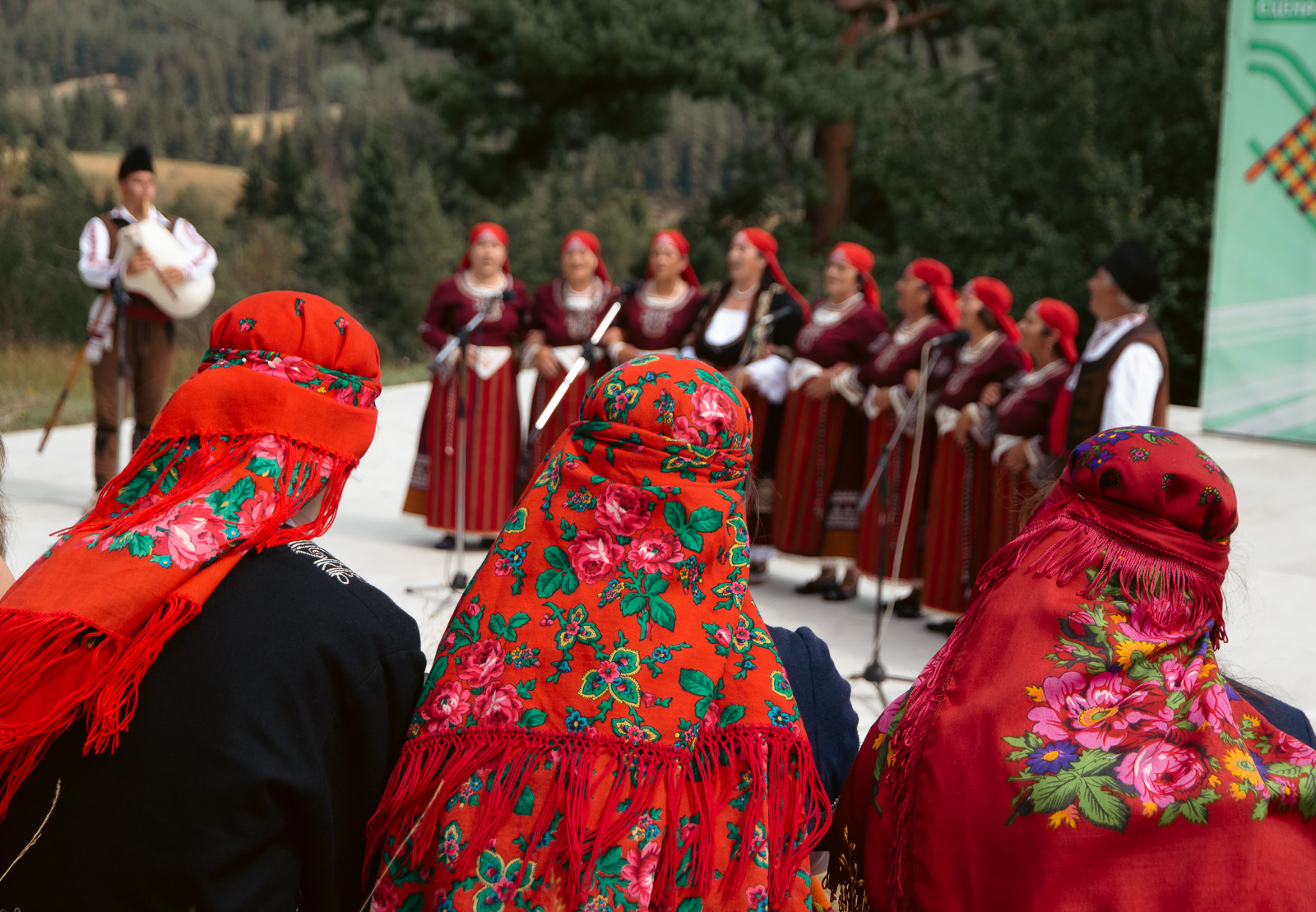
Bulgarian Chitalishte (Community Cultural Centre)
A “chitalishte” is a community-run cultural centre open to all, regardless of age or background. Many chitalishta are scattered across every corner of Bulgaria. These are places where traditions are kept alive, knowledge is shared, and generations meet to learn, create, and celebrate.
Cultural practices associated to the 1st of March
Every 1st of March, Bulgarians exchange Martenitsa (red and white woven threads) as a wish for health, happiness, and a smooth transition from winter to spring. Worn on the wrist or pinned to clothing, they are removed when the first stork, swallow, or blossoming tree appears.
This ancient tradition, shared across several Balkan countries, brings together people of all ages and fosters a deep connection with nature. Passed down through families, schools, and community workshops, the Martenitsa remains a beloved symbol of renewal, protection, and the joy of welcoming spring.
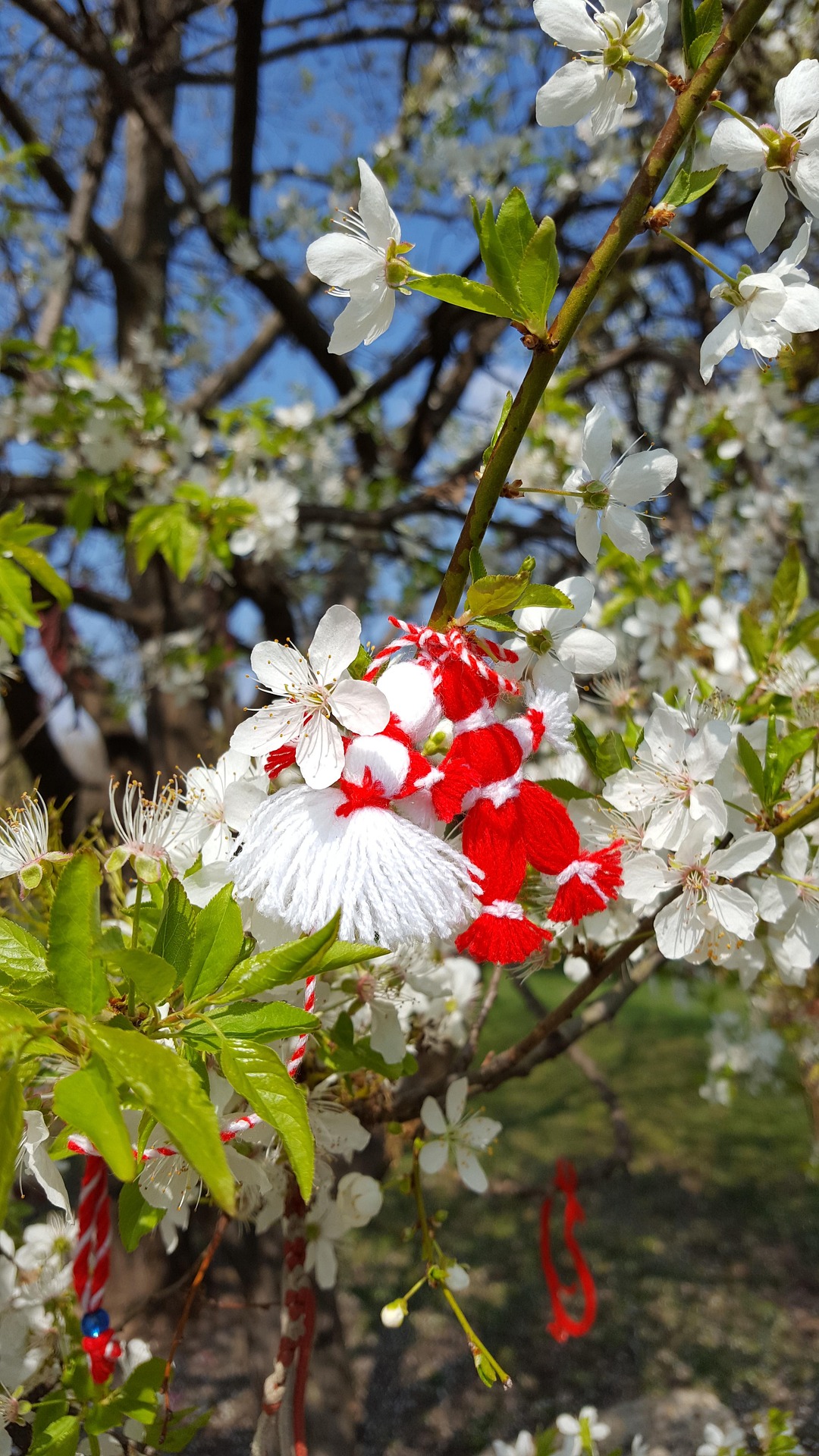
Image Source: Pixabay.com
Visoko multipart singing from Dolen and Satovcha
In the mountain villages of Dolen and Satovcha, voices rise and fall in Visoko – a unique style of multipart singing unlike anywhere else in Bulgaria.
Performed mainly by women, its three forms blend deep, sustained harmonies with high-pitched cries that slide down into rich, low tones. Once sung between fields by working women, Visoko echoed across the hills as groups called and responded to each other.
Free map of UNESCO sites in Bulgaria
To make exploring Bulgaria’s world treasures easier for you, I’ve created a free Google Map list featuring all of the country’s UNESCO-inscribed sites, as well as those currently on the Tentative List.
Click on the map to open the Google Maps list, then save it to your account so you can access it anytime while travelling. It’s your pocket guide to Bulgaria’s most remarkable heritage.
Have you visited any of the UNESCO Sites in Bulgaria? Let me know about your experience in the comments bellow!
FAQs
How many UNESCO sites are in Bulgaria?
Bulgaria has 10 UNESCO World Heritage Sites – 7 cultural and 3 natural. There are 16 more on the tentative list, plus 8 traditions and practices on the UNESCO Intangible Cultural Heritage lists.
What is the UNESCO city in Bulgaria?
Nessebar is Bulgaria’s UNESCO-listed ancient town, famous for its well-preserved churches, historic houses, and layered history stretching back over 3,000 years. Ancient Plovdiv is on UNESCO’s Tentative List but has not yet been inscribed.
When did Bulgaria join UNESCO?
Bulgaria became a member of UNESCO on 17 May 1956.
What is the heritage of Bulgaria?
Bulgaria’s heritage is a blend of ancient Thracian treasures, medieval fortresses, Orthodox monasteries, and remarkable natural landscapes, alongside living traditions like fire-dancing (Nestinarstvo), intricate carpet weaving, and spring celebrations with red-and-white Martenitsi.
Is the Bulgarian calendar on UNESCO?
No, the ancient Bulgarian calendar is not on the UNESCO list.
What are some interesting UNESCO Bulgaria facts?
Among Bulgaria’s UNESCO sites, one covers an entire national park – Pirin National Park. One of the sites is an entire living town – Ancient Nessebar. Several of Bulgaria’s UNESCO landmarks, such as Rila Monastery and the Madara Rider, are also part of the country’s famous “100 National Tourist Sites” program, making them both globally and nationally treasured destinations.
Why is Pirin National Park on UNESCO?
Pirin National Park is on UNESCO’s World Heritage List because it meets three key criteria for Outstanding Universal Value – Exceptional natural beauty (Criterion vii); Significant geological features (Criterion viii); Biodiversity and ecosystem value (Criterion ix).
Stefani Gospodinova
Founder and Content Creator
Stefani is a travel blogger born and raised in Bulgaria, and the founder of Kiss My Backpack. Having explored the country since childhood, she shares practical tips, local insights, and her own photography to help visitors plan their trip.
Related posts
Nessebar is one of those places that sneaks up on you - it’s small, charming, and packed with things to see and do. From churches and cobbled streets to boat trips and wine tastings, here’s why you should add it to your Black Sea travel plans.
Looking for a day trip that mixes history with seaside charm? Nessebar Old Town has it all - ancient churches, cobbled streets, sea views, and plenty of cozy spots to eat and wander.
10+ UNESCO sites in Bulgaria If you’re into history, culture, or simply love ticking off epic landmarks, you’ve probably heard […]
Latest blog posts
Nessebar is one of those places that sneaks up on you - it’s small, charming, and packed with things to see and do. From churches and cobbled streets to boat trips and wine tastings, here’s why you should add it to your Black Sea travel plans.
Looking for a day trip that mixes history with seaside charm? Nessebar Old Town has it all - ancient churches, cobbled streets, sea views, and plenty of cozy spots to eat and wander.
In this guide, I’ll walk you through the top spa and wellness hotels in Burgas, what makes each one special, and how you can also experience the healing mineral waters of the historic Aquae Calidae - one of the most unique things to do in Burgas.
Slow down and let Burgas show you its magic. From seaside strolls and island escapes to birdwatching, water sports, and day trips into Strandzha’s wild heart - here are 21+ ways to experience Bulgaria’s Black Sea city like a local.

